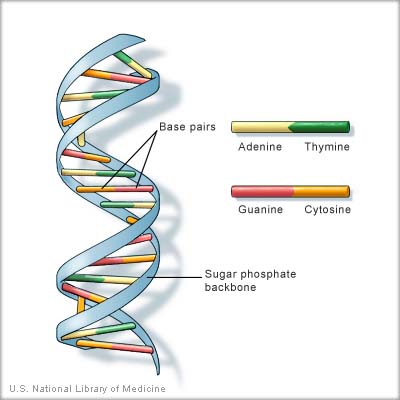Cutting-Edge Technique Simultaneously Edits Multiple Genetic Targets
Alternative to CRISPR/Cas9 May Cause Fewer Undesired Changes

Editing two genetic sites situated on the same chromosome simultaneously with CRISPR/Cas9 can delete the regions of DNA between them because the method severs both strands of the DNA molecule to make changes. A new technique called base editing could avoid this issue by directly changing one DNA letter — or ‘base’ — into another.
IRP researchers have always worked on the cutting edge of biomedical science, from testing the first successful treatment for childhood schizophrenia to pioneering the first screening technique for HIV. In a new study, an IRP team recently achieved yet another first: simultaneously editing two genetic sites in mice using a brand-new approach called base editing that may prove to be more precise — and therefore safer — than other gene editing methods.1
Some genetic diseases occur when just one letter in a DNA strand is replaced with another, but many others are caused by multiple such mutations. When these mutations occur on the same chromosome — discrete units into which DNA is organized — the mutations are said to be ‘linked.’ Correcting linked mutations one at a time could alleviate many diseases, but the multiple rounds of gene editing involved are time-consuming and increase the odds that something could go wrong.
“A patient might have multiple mutations related to their disease, but if we only target one of them, we cannot expect that patient to get better,” says Hye Kyung Lee, Ph.D., the new study’s first author and a postdoctoral fellow in the lab of IRP senior investigator Lothar Hennighausen, Ph.D. “Therefore, it is paramount to establish a reliable tool that permits the efficient and faithful alteration of two or more linked mutations in one step.”
While the CRISPR/Cas9 genome editing system has dominated news stories and scientific studies over the past few years, it has significant weaknesses, in particular when it comes to simultaneously editing multiple genetic sites on the same chromosome.2 Because CRISPR/Cas9 alters DNA by cutting both strands of the double-stranded DNA molecule, it often accidentally deletes sections of DNA in between the two locations it was meant to change.
To get around this problem, Dr. Lee and her IRP colleagues teamed up with Harvard University researchers who, in 2016, invented a gene editing technique called base editing that changes single letters in the genetic code without cutting both strands of DNA.3 While the Harvard researchers and a few other labs around the world have applied base editing to alter DNA in cell lines, Dr. Lee’s study was the first ever to use the technique to simultaneously edit two genetic sites in an animal.
The investigators used base editing to simultaneously alter two genetic locations on the same chromosome in mouse embryos. After the mice were born, half of the animals had both of the genetic changes, and these mice passed on those changes to their offspring. Moreover, while base editing produced minor unintended changes to the DNA in a small proportion of the animals, these unintended effects paled in comparison to the large deletions that occurred when the scientists tried to simultaneously alter two locations on the same chromosome using CRISPR/Cas9. In those experiments, more than two thirds of the mice were completely missing the region of DNA between the two sites.
“The precision of base editors brings fresh air into the genome editing method to avoid issues encountered with CRISPR/Cas9,” Dr. Hennighausen says.
Future research in Dr. Hennighausen’s lab will examine whether base editing consistently causes as few unwanted changes across the entire genome as it did in this study. Once the technique’s precision is verified, it could aid many types of experiments.
“The ability to introduce linked mutations simultaneously in one step has implications for a wide range of applications, including analyzing the functions of linked genetic sites, creating disease models generated by multiple mutations, and correcting multiple disease-causing mutations,” Dr. Lee says.
Subscribe to our weekly newsletter to stay up-to-date on the latest breakthroughs in the NIH Intramural Research Program.
References:
[1] Simultaneous targeting of linked loci in mouse embryos using base editing. Lee HK, Willi M, Smith HE, Miller SM, Liu DR, Liu C, Hennighausen L. Sci Rep. 2019 Feb 7;9(1):1662. doi: 10.1038/s41598-018-33533-5.
[2] CRISPR/Cas9 targeting events cause complex deletions and insertions at 17 sites in the mouse genome. Shin HY, Wang C, Lee HK, Yoo KH, Zeng X, Kuhns T, Yang CM, Mohr T, Liu C, Hennighausen L. Nat Commun. 2017 May 31;8:15464. doi: 10.1038/ncomms15464.
[3] Programmable editing of a target base in genomic DNA without double-stranded DNA cleavage. Komor AC, Kim YB, Packer MS, Zuris JA, Liu DR. Nature. 2016 May 19;533(7603):420-4. doi: 10.1038/nature17946.
Related Blog Posts
This page was last updated on Tuesday, May 23, 2023
